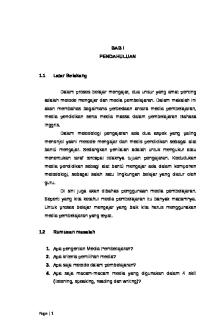SBMPTN Bahasa Inggris PDF

| Title | SBMPTN Bahasa Inggris |
|---|---|
| Author | Santri Musisi |
| Pages | 5 |
| File Size | 115.6 KB |
| File Type | |
| Total Downloads | 281 |
| Total Views | 343 |
Summary
SBMPTN Bahasa Inggris Latihan Soal 01 - SBMPTN Doc Name: SBMPTNLAT01ING Version: 2016-04 halaman 1 Text 1-3. (B) E-cigarette effects are unpopular. (C) The number of people using e-cigarettes Electronic cigarettes: Are they safer than has double between 2011-2012. tobacco? Or are they a high-tech wa...
Description
SBMPTN Bahasa Inggris Latihan Soal 01 - SBMPTN Doc Name: SBMPTNLAT01ING
Version: 2016-04
Text 1-3. Electronic cigarettes: Are they safer than tobacco? Or are they a high-tech way to hook a new generation on a bad nicotine habit? Research into the effect of e-cigarettes lags behind their popularity. But ready or not, the era of e-cigarette is here. It’s a booming, billion-dollar industry - on track to outsell tobacco products within a decade. The number of teens and tweenagers (children between the ages of about 10 and 14) using these products doubled between 2011 and 2012. 01. What does the passage say about the effects of e-cigarettes? The passage … (A) says that the effects are popular. (B) says that the research of the effect of e-cigarettes is still insufficient (C) says that the effects are good for teens and tweenagers. (D) says that the effects are high-tech. (E) provides no information about the effects. 02. From the passage above, which sentence is a prediction? (A) Electronic cigarettes: Are they safer than tobacco? Or are they a high-tech way to hook a new generation on a bad nicotine habit? (B) Research into the effects of e-cigarettes lags behind their popularity. (C) It’s a booming, billion-dollar industry on track to outsell tobacco products within a decade. (D) The number of teens and tweenagers (children between the ages of about 10 and 14) using these products doubled between 2011 and 2012. (E) Nothing. 03. Which one is TRUE according to the text? (A) Electronic cigarettes are safer than tobacco.
halaman 1
(B) E-cigarette effects are unpopular. (C) The number of people using e-cigarettes has double between 2011-2012. (D) The number of e-cigarettes sold is greater than that of normal tobacco products. (E) Some teens use e-cigarettes. Text 4-8. Marie Curie was a Polish-born French scientist who, with her husband, Pierre Curie (1859-1906). was an early investigator of radioactivity. From 1896. the Curies worked together. building on the results of Henri Becquerel. who had discovered radioactivity from uranium salts. Marie Curie discovered that thorium also emits radiation and found that the mineral pitchblende was even more radioactive than could be accounted for by any uranium and thorium content. The Curies then carried out an exhaustive search and in July 1898 announced the discovery of polonium, followed in December of that year with the discovery of radium. They shared the 1903 Nobel Prize for physics with Becquerel for the discovery of radioactivity. The Curies did not participate In Becquerel’s discovery but investigated radioactivity and gave the phenomenon its name. Marie Curie went on to study the chemistry and medical applications of radium, and was awarded the 1911 Nobel Prize for chemistry in recognition of her work in isolating the pure metal. At the outbreak of World War I in 1914. Marie Curie helped to equip ambulances with X-ray equipment and drove the ambulances to the front lines. The International Red Cross made her head of its Radiological Service. She taught medical orderlies and doctors how to use the new technique. By the late 1920s. her health began to deteriorate: continued exposure to high energy radiation had given her leukemia. She entered a sanatorium and died on July 4. 1934. Throughout much of her life, Marie
Kunci dan pembahasan soal ini bisa dilihat di www.zenius.net dengan memasukkan kode 4878 ke menu search. Copyright © 2016 Zenius Education
SBMPTN Bahasa Inggris, Latihan Soal 01 - SBMPTN doc name : SBMPTNLAT01ING
version : 2016-04 |
Curie was poor. and the painstaking radium extractions were carried out in primitive conditions. The Curies refused to patent any of their discoveries, wanting them to benefit everyone freely. They used the Nobel Prize money and other financial rewards to finance further research. One of the outstanding applications of their work has been the use of radiation to treat cancer, one form of which cost Marie Curie her life. 04. Which one is TRUE according to the passage? (A) Marie Curie and her husband discovered radioactivity from uranium salts. (B) Marie Curie got only one Nobel Prize for physics. (C) The Curies had worked together with Becquerel in a research. (D) Marie Curie financed her researches with their patent money. (E) Marie Curie participated in the World Wars. 05. Why didn’t the Curies patent their discoveries? (A) They already had some money from Nobel Prize. (B) They were considered wealthy at that time. (C) They wanted their research to be used freely. (D) They were already famous. (E) Becquerel had already patented their discoveries. 06. The phrase “the pure metal” (paragraph 1) refers to … (A) uranium. (B) radiation. (C) thorium. (D) radium. (E) polonium. 07. From the text we know the following, EXCEPT … (A) A research of the Curies was based on a Becquerel’s research. (B) Marie Curie passed away after Pierre Curie had passed away.
halaman 2
(C) The curies had discovered polonium before radium. (D) The mineral pitchblende was more radioactive than thorium content. (E) Nobel Prize only recognized Marie Curie and Becquerel for the discovery of radioactivity. 08. What is the best title of the passage? (A) How Radioactivity Changed the World. (B) Science and its applications. (C) The Discoveries of Marie Curie. (D) The Competition between Marie Curie and Henri Becquerel. (E) The History of Radioactivity. Text 09-15. Between 13,000 and 12,600 years ago, members of the Clovis culture appeared in North America, where they made and used distinctive stone-tipped spears to hunt mammoth, bison and mastodon. Until recently, all that archeologists knew about the Clovis people came from studying their tools, which have been unearthed at wide-ranging sites across the country. Now, DNA analysis of a single human skeletonthat of a one-year-old boy buried in a rocky field in modern-day Montana - has allowed scientists to link the Clovis culture to Native Americans throughout the Western Hemisphere. Construction crews first discovered the ancient remains of an infant in 1968 on private property owned by the Anzick family in western Montana. Dubbed Anzick-1, the one-year-old boy is the only human skeleton that has been identified as a member of the widespread, sophisticated Ice-Age culture known as Clovis. Now, a team of scientists has succeeded in mapping the infant’s DNA, in the oldest genome sequence of an American individual ever performed. According to their findings, published in the journal Nature in February 2014, the Clovis people are direct ancestors of many Native Americans now living in North America, and can be linked to many native peoples in Central and
Kunci dan pembahasan soal ini bisa dilihat di www.zenius.net dengan memasukkan kode 4878 ke menu search. Copyright © 2016 Zenius Education
SBMPTN Bahasa Inggris, Latihan Soal 01 - SBMPTN doc name : SBMPTNLAT01ING
version : 2016-04 |
South American as well. Up to this point, all scientists studying the Clovis culture had to go on where the stone and bone tools have been found at sites ranging from Washington State to Florida, along with many states in between. By sequencing the genome of the infant recove re d a t the A nzi ck si te, the international team of researchers gained the most vivid insight yet about who these people might actually have been. They compared the DNA of the Clovis infant to several different genomes, including a 24,000 -year-old sample from a young man buried on the banks of Lake Baikal in Siberia, a 7,000-year-old sample from Spain and a 4,000-year-old sample from Greenland. The Clovis DNA showed the most similarity with that of the Siberian youth, whom scientists genetically linked with today’s Native Americans late last year. The new study adds to existing archeological evidence that Native American descended from humans who migrated to North America from Asia through Siberia around 15,000 years ago. They are believed to have made the voyage across the Bering land bridge, which connected Asia with North America during the last Ice Age. According to archeologist Michael Waters of Texas A&M University, a member of the team who conducted the new study, the genetic evidence “strongly suggests that there was a single migration of people into the Americas … [T]hese people were probably the people who eventually gave rise to Clovis.” Such evidence casts doubt on other theories arguing that Clovis’ ancestors came from Europe, rather than Asia. Such hypotheses rely partially on the fact that the “Clovis points” found on their tools and weapons are so similar to the flint tools used by the Solutrean culture, which flourished in Spain and France during the Ice Age. While Anzick-1 showed the most genetic similarities with Native Americans in North America, the study also revealed ties with the indigenous peoples of Central and South America. The team’s data indicates that sometime between 13,000 and 24,000 years ago, the same ancient people that arrived
halaman 3
from Asia split into two lineages: One gave rise to Clovis and today’s Native Americans of North America, and the other became the ancestors of Central and South American tribes. The scientists studying Anzick-1 have worked closely with Native American tribes in Montana, sharing the results of the study with them and ensuring that the remains were treated appropriately. The infant will be reburied later this year, on the same property from which he was unearthed. For their part, the tribes have shown little surprise at the scientists’ conclusions. Shane Doyle, a professor of Native American History at Montana State University and co-author on the study, is also a member of the Crow tribe. As he told NBC News, after conversations with more than 100 tribe members, the main reaction was “We have no reason to doubt that we’ve been here for this long.” 09. What was Clovis? (A) a widespread. sophisticated Ice Age culture in North America. (B) a culture that existed in Greenland about 4.000 years ago. (C) a culture that flourished in Spain and France during the Ice Age. (D) a culture that gave rise to Central and South American tribes. (E) a skeleton found in Montana. 10. The text describes a possible sequence of human descent. At the end of the sequence are Native Americans. What people are at the beginning of the sequence? (A) People who migrated from Asia to North America about 15,000 years ago. (B) Tribes living in Central and South America today. (C) People who were living in Greenland about 4,000 years ago. (D) People who were living in Spain about 7.000 years ago. (E) The Crow Tribe.
Kunci dan pembahasan soal ini bisa dilihat di www.zenius.net dengan memasukkan kode 4878 ke menu search. Copyright © 2016 Zenius Education
SBMPTN Bahasa Inggris, Latihan Soal 01 - SBMPTN doc name : SBMPTNLAT01ING
11. The Clovis people descended from humans who migrated to North America from Asia through Siberia around 15,000 years ago. What evidence supports this theory? (A) the similarity between DNA of a Clovis infant and the DNA of a member of the Crow tribe. (B) the similarity between the DNA of a Clovis infant and the DNA of a person from Iceland who lived 4,000 years ago. (C) the similarity between the DNA of a Clovis infant and the DNA of a person from Spain who lived 7,000 years ago. (D) the similarity between the DNA of a Clovis infant and the DNA of a Siberian youth who lived 24,000 years ago. (E) the similarity between the DNA of a Clovis infant and the DNA of all European people. 12. What is the main idea of the passage? (A) Construction crews discovered the ancient remains of an infant in 1968 in western Montana. (B) Similarities exist between the tools of the Clovis people and the tools used by members of the Solutrean culture. (C) DNA analysis of an ancient infant’s remains has allowed scientists to link the Clovis culture to Native Americans. (D) Scientists studying the remains of an ancient infant worked closely with Native American tribes in Montana to ensure that the remains were treated appropriately. (E) DNA analysis of an ancient infant’s remains has been approved by scientists. 13. The Clovis people descended from humans living in Europe. What evidence supports this theory? (A) the similarity between the tools of the Clovis people and the tools of people in Siberia. (B) the similarity between the tools of the Clovis people and the tools of people
version : 2016-04 |
halaman 4
in Montana. (C) the similarity between the tools of the Clovis people and the tools of people in France and Spain. (D) the similarity between the tools of the Clovis people and the tools of people in Greenland. (E) the similarity between the tools of the Clovis people and tools of people in the Crow tribe. 14. Read this sentence from the text. ‘According to their findings, published this week in the journal Nature, the Clovis people are direct ancestors of many Native Americans now living in North America. and can be linked to many native peoples in Central and South America as well.’ What does the author mean by writing that the Clovis can be linked to many native peoples in Central and South America? (A) The author means that many native peoples in Central and South America could communicate with the Clovis people. (B) The author means that many native peoples in Central and South America are related to the Clovis people. (C) The author means that the Clovis people used the same technology as many native peoples in Central and South America. (D) The author means that the Clovis people got along well with many native peoples in Central and South America. (E) The author means that the Clovis people went to war with many native peoples in Central South America. 15. Read these sentences from the text. ‘While Anzick-1 showed the most genetic similarities with Native Americans in North America. the study also revealed ties with the indigenous peoples of Central and South America. The team’s data indicates that sometime between 13.000 and 24,000 years ago, the same ancient people that arrived from Asia split into two lineages: One gave rise to Clovis and today’s Native Americans of North America, and the other became the ancestors of Central and
Kunci dan pembahasan soal ini bisa dilihat di www.zenius.net dengan memasukkan kode 4878 ke menu search. Copyright © 2016 Zenius Education
SBMPTN Bahasa Inggris, Latihan Soal 01 - SBMPTN doc name : SBMPTNLAT01ING
version : 2016-04 |
halaman 5
South American tribes.’ What word could bet replace While in the first sentence? (A) Currently. (B) Although. (C) Consequently. (D) Finally. (E) If.
Kunci dan pembahasan soal ini bisa dilihat di www.zenius.net dengan memasukkan kode 4878 ke menu search. Copyright © 2016 Zenius Education...
Similar Free PDFs

SBMPTN Bahasa Inggris
- 7 Pages

SBMPTN Bahasa Inggris
- 5 Pages

SBMPTN 2016 Bahasa Inggris Soal
- 5 Pages

BAHASA INGGRIS
- 10 Pages
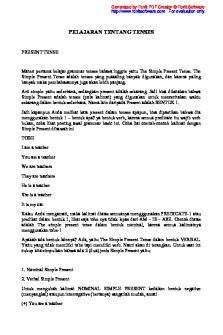
16 tenses bahasa inggris
- 27 Pages
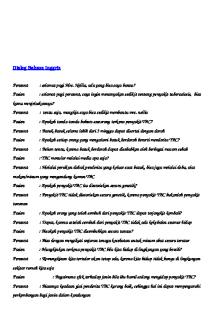
Dialog Bahasa Inggris
- 4 Pages

SKKD BAHASA INGGRIS SMK
- 3 Pages

MAKALAH PEMBELAJARAN BAHASA INGGRIS
- 57 Pages
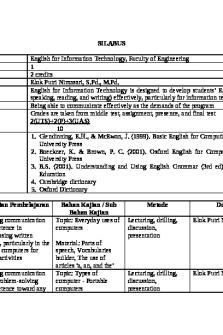
SILABUS BAHASA INGGRIS TI
- 4 Pages
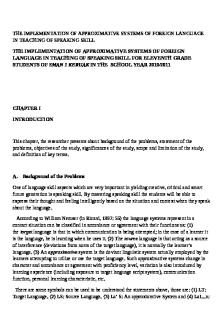
CONTOH SKRIPSI BAHASA INGGRIS
- 24 Pages

CBR bahasa inggris bisnis
- 24 Pages

Ujian Wacana Bahasa Inggris
- 5 Pages

Tugas bahasa inggris
- 1 Pages
Popular Institutions
- Tinajero National High School - Annex
- Politeknik Caltex Riau
- Yokohama City University
- SGT University
- University of Al-Qadisiyah
- Divine Word College of Vigan
- Techniek College Rotterdam
- Universidade de Santiago
- Universiti Teknologi MARA Cawangan Johor Kampus Pasir Gudang
- Poltekkes Kemenkes Yogyakarta
- Baguio City National High School
- Colegio san marcos
- preparatoria uno
- Centro de Bachillerato Tecnológico Industrial y de Servicios No. 107
- Dalian Maritime University
- Quang Trung Secondary School
- Colegio Tecnológico en Informática
- Corporación Regional de Educación Superior
- Grupo CEDVA
- Dar Al Uloom University
- Centro de Estudios Preuniversitarios de la Universidad Nacional de Ingeniería
- 上智大学
- Aakash International School, Nuna Majara
- San Felipe Neri Catholic School
- Kang Chiao International School - New Taipei City
- Misamis Occidental National High School
- Institución Educativa Escuela Normal Juan Ladrilleros
- Kolehiyo ng Pantukan
- Batanes State College
- Instituto Continental
- Sekolah Menengah Kejuruan Kesehatan Kaltara (Tarakan)
- Colegio de La Inmaculada Concepcion - Cebu

